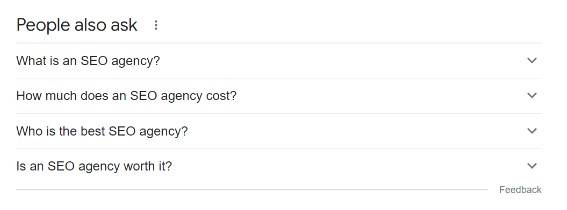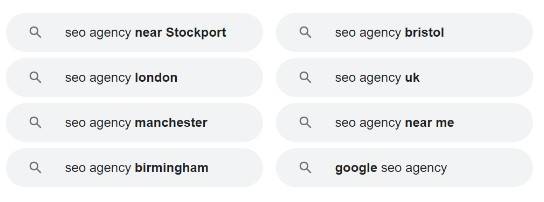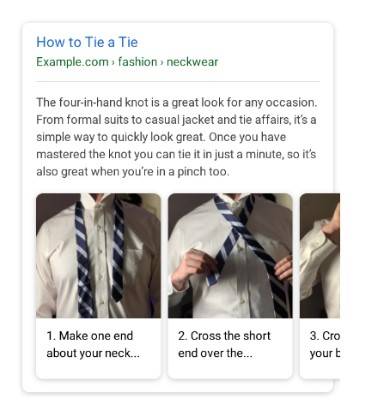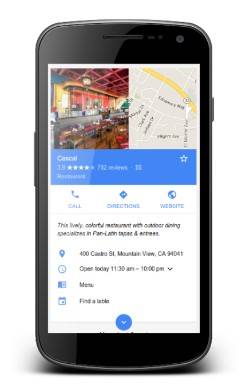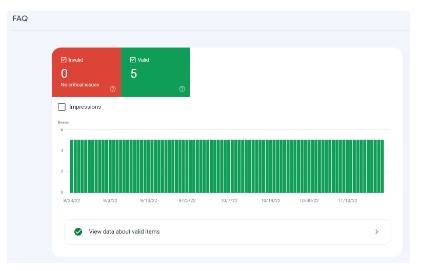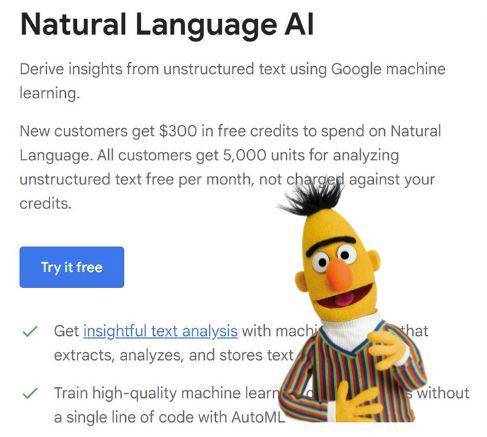Digital PR has become a major buzzword in the industry over the last 24 months, and while it’s always played an important role in visibility, traffic and driving brand awareness (and sales!), the value of Digital PR has never been more important than over this time.
As brands start to recognise the value of Digital PR and more companies turn towards using it, the competitive space has become more and more crowded. Journalists have become increasingly inundated with a wide range of press releases, from fake jobs to top 10 lists and huge data-driven campaigns.
If you’ve wanted to take a leap into Digital PR, chances are you have looked at it for one of two reasons:
a) you want to drive brand awareness in the online space OR
b) you want to use it to help drive great quality links, authority and trust into your website from an SEO perspective.
If the latter is the main reason that you’re looking at Digital PR activation, then here are 6 great Digital PR techniques which can really help to turbo charge your SEO campaigns and drive your ROI further:
1. Thought Leadership
Thought leadership has been around for years and has long been a staple of PR, both traditional and digital. If you are looking to boost your SEO value from Digital PR then thought leadership is a great place to start. One of the key pillars of SEO performance is E-A-T or Expertise, Authority and Trust, which is created on-site but also off-site through link optimisation and acquisition. It’s a great way to showcase your expertise as you will often put forward an expert from your brand. This can then help those all-important external ranking signals, by allowing them to understand that your brand really holds expertise in this space.
What is Thought Leadership?
Thought leadership is essentially where you tap into the talent within your brand to answer some of the most pressing questions that your users or the external public might have. You take your own expertise, experience or data and put it out into the world to help educate and inform others. Establishing yourself or your company as a thought leader is essentially working to put yourself out there as a well-known resource and expert across a particular vertical which, in turn, can help to educate and inform an audience about you and your brand.
You can do this in a number of ways:
- with tools that connect you to journalists who are looking for information, responding to their queries and putting your thought leader forward
- on Twitter by responding to hashtag searches which are very popular with journalists
- pro-actively researching a particular topic, perhaps one that’s trending in the news, and outreaching this with a suitable angle to journalists
Each of these approaches is designed to put your expert at the forefront of a particular topic.
Increase reach
Thought leadership doesn’t just have to be linked to one vertical either as you may find that there are a range of verticals your brand can offer expertise in. Founded a business? You can offer business expertise. Got a HR team? They can offer HR expertise. Got a finance department? They can offer financial expertise. You don’t just have to limit your thought leadership to one individual and one vertical; by broadening your reach you can provide more well-rounded expertise signals for your business.
Increase traffic
Thought leadership is incredibly effective for SEO too. In the latter half of 2022 we worked closely with in-house expert, Angela Slater, at Hayes Garden World to create a range of thought leadership pieces on highly relevant publications. This resulted in a significant increase in traffic and visibility for the brand as well as establishing Angela as a thought leader.
Quick searches of Google demonstrate that she has now contributed to most major publications within the gardening industry as well as some great nationals:
The resulting outcome for Hayes Garden World was a significant jump in visibility, in addition to landing top 5 rankings for major terms including “garden furniture” and “garden furniture sale” – right up there among major nationwide retailers! You can read all about our work with Hayes Garden World in our case study.
We know that a lot of Google’s Core Algorithm updates recently have looked at E-A-T signals so, if you’re looking to really enhance those off-site trust signals, a solid thought leadership campaign is a great place to start.
2. Proactive Newsjacking
Jumping on trends is a really great way to utilise Digital PR to build relevant and effective high-quality links back into your website. We approach newsjacking in two ways: proactive and reactive. We will go through both in this blog, starting with the proactive side of things.
What is Proactive Newsjacking?
Proactive Newsjacking is looking to jump on emerging trends before they happen, to offer data, insights or expertise and be early to the conversation. Essentially, you need to read up on the media to understand when something is going to happen that could be relevant to your client or your business. You can then put yourself straight into the conversation by offering some great information, or a new angle on an existing story, to add value to an emerging trend or storyline.
Proactive newsjacking, when done correctly, can help to drive SEO in more ways than one as it has the potential to drive high quality referral traffic to your website. Proactive newsjacking is, therefore, one of the more powerful Digital PR techniques. By getting to the front of the conversation you are also more likely to attract more media interest with the potential for follow up interviews and comments and, as a result, even more coverage! Timing is critical here, so planning in advance to release your content to journalists at just the right time can often make or break this approach.
If you’re looking to use this method, we’d usually recommend that you build out a calendar that allows you to plan for these events in advance. A calendar will also ensure you have PLENTY of time to allow for any potential issues, i.e. getting sign off on comments or producing data-led reports. By planning in advance you can not only ensure you get all of your content together in time, you’ll also be able to schedule each push of your content/release at the just right time.
Proactive planning
Timing is absolutely crucial across any newsjacking but with proactive newsjacking, given that people have likely known about it for a while, it’s even more important as there could be many other PRs trying to jump on the same trend. In addition to researching the journalists that are likely to cover the topic and the types of content they’ve written, you can work with tools like BuzzSumo to understand the times they are most likely to publish this content and how quickly they turn around a piece after news has broken. This is useful information that will help to inform your publishing schedule and your email pushes.
Proactive newsjacking is a great way to get your brand in front of an audience in a planned manner, tying together nicely the visibility of Digital PR with the high quality link acquisition and E-A-T signals of SEO, to drive a great ROI from your campaigns.
3. Reactive Newsjacking
On the other side of the coin we have reactive newsjacking. While this still falls under that holistic “newsjacking” umbrella it takes a very different approach to proactive newsjacking and can often have a very different outcome.
What is Reactive Newsjacking?
Reactive Newsjacking is when you jump on something that has just broken in the news, or that is trending in the news and you bring your brand or client into the conversation by offering a new angle, expert opinion or new data that might not have previously been identified. It’s a great way to showcase your expertise on a given topic and it can get great coverage for your brand by putting you front and centre of the conversation. Reactive newsjacking is also popularly syndicated as it generally talks about a very topical issue and so people are more likely to have a need to cover the topic.
Reactive newsjacking ties in nicely with your SEO because it brings that combination of super high quality links and really strong E-A-T signals, especially on the expertise and authority side. Additionally, it helps to establish your brand as a thought leader and build that all important brand awareness and recognition. It can also help with semantically themed external links; we know how important relevancy is to SEO, both on-page and off-page, so newsjacking something that’s highly relevant to your brand is a great way to tick this box as well.
Get ahead
Reactive newsjacking doesn’t have to take a lot of time either – rather it’s about being first to the conversation with a great angle. Using tools like Google Trends and setting up Google Alerts are great ways to ensure you’re at the forefront of the news. We also monitor Twitter hashtags and the BBC Breaking News page, to ensure that we can jump on stories quickly as they happen. Another great way to track this is getting your team to run an open channel, such as on Microsoft Teams, where they can pop trending news that the Digital PR team can pick up on.
You can also have some fun with reactive newsjacking. Just after lockdown ended we ran this reactive newsjacking campaign for Hayes Garden World which we labelled “Lonely Plants Club.” It focused on explaining how houseplants could become lonely after lockdown ended and the steps that owners could take to make life a little easier for them. It was a light hearted piece but incredibly relevant at the time, and obviously super relevant to our garden centre client. The piece landed really well, generating over 23 top tier links across national and industry publications including the Daily Star and Country Living.
The great thing about reactive newsjacking is that it can be such a quick turnaround if you have the right processes in place. Focus on honing in on and improving those processes, and add this technique to your Digital PR and SEO tool belt.
4. Industry Report Analysis
Reports are a really effective way of utilising Digital PR because they help to build one of the most important aspects of a Digital PR campaign: relevancy. We can analyse reports which are really relevant to our clients and industries to clearly show how our expertise and analysis ties closely to the brand.
We know that Google loves relevancy. There’s been a lot written about the topic, most notably this content from Cyrus Shephard on MOZ about the concept of link relevance and Google rankings. In the article he talks through a range of scenarios where link relevance has played an important role, and has some great takeaways on how we can improve overall link relevance. This is crucial to ensuring we have great semantically themed content throughout the article, and using an approach like industry report analysis is a great way to showcase this.
Speak to your client
There are a number of ways that you can approach industry report analysis but, most commonly, speaking to your client and being aware of popular reports within their industry is a great place to start. This could be anything from a state of marketing report, to an NHS Digital report, through to a Government report on pedestrians and cycling. With most of these reports being freely available there is usually a mine of great information that you can fill your news story with too.
Find your angle
Finding juicy angles plays a strong role in getting reports covered and often you don’t have to dig deep if there are some standout or alarming statistics that are in the public interest. Building a story around this and analysing data to further back this up can be a great way to pull together a nice data analysis piece. From an SEO perspective the data side of this analysis offers some really strong expertise and trust signals, as well as providing some great supporting data which can back up any on-site content.
If you’re looking to boost your Digital PR through an industry report analysis then the first step is to find any free industry reports that are available and note down the dates they are published. Jumping on and analysing this quickly will allow you to get to the front of the conversation and help to cement the brand’s position.
5. Google Search Trends Analysis
In addition to looking at industry reports and trends there are other great tools available that provide mounds of free and interesting data to analyse. Google Ads Keyword Planner and Google Trends are two such tools, and both offer tons of information around search habits relating to specific queries. They can help you identify what is trending, and what isn’t, compared to different times of the year or year on year comparisons.
Google Ads Keyword Planner contains a range of data pertaining to individual keyword search trends. It allows you to see how that keyword has performed over time and also breaks it down into mobile and desktop users so you can understand how people are searching differently for specific search terms. Below we can see that the term “seo agency” has grown substantially over the last year, from just under 5k searches per month in November to nearly 8k searches per month this year – a news story in itself!
If we were to layer that data with countries that have searched specifically for “seo agency,” we would be able to build a narrative around which countries have seen a spike in demand for seo agencies over the last 12 months. For example, in Australia I can see that while there was an initial rise around the middle of the year, demand has really started to tail off in recent months:
And if we add the USA into the mix we see a trend very similar to that in Australia:
In isolation, these three pieces of information might not seem to generate a news story, but when pulled together we can analyse that searches for seo agencies in the UK have continued to rise over the last six months in contrast to searches in Australia and the USA. It’s a simple piece of data analysis but one that you can write a piece of content around.
In addition to Google Keyword Planner you can also use the Google Trends tool to analyse data and draw comparisons between different services and products. Google Trends allows you to compare trending keywords against each other and see how a particular keyword has trended over time. An example of this would be using the tool to evaluate how each of our key services ranks against each other as a trending topic:
From this we can evaluate that SEO is by far the most popular service, followed by PPC and then Digital PR. We could then pull each of these services out individually to analyse their performance over the last 12 months.
Each of these examples shows very simple and quick data analysis. Yet with the right data and the right angle, you can turn this into a great piece of Digital PR content that is super relevant to your brand and likely to land those all important high quality relevant links.
6. Product Placements & Round-Ups
Rounding off the top 6 we have product placements and round-ups – an absolute stalwart for the ecommerce sector. Although this point is last it is most definitely not least! Product placements can be a really powerful way of getting your product in front of the right audience and driving crucial referral sales through to your website. At the same time they have the opportunity to build some really high quality links from incredibly relevant domains, i.e. domains that your target audience happens to be on.
There are a number of different approaches you can take to product placements, from looking at the Top x lists for specific products (these always tend to rank well) to working closely with journalists who you know are going to be looking to cover a particular product or product range. In most cases they are just looking for a hi-res image of your products, and so having this type of image to hand is incredibly helpful; we often keep them all in a Google Drive so they are ready to pull out at a moment’s notice. It’s also valuable to have visuals over your stock levels to ensure you aren’t promoting a product which is unavailable or low in stock.
If you’re looking for referral traffic then there’s nothing better than a placement like this…
… to really get you in front of your target market. In addition, the product review style of the content is only helping to add to the authority and trust of the overall product. These are key elements of E-A-T which feed heavily into Google’s Page Quality Rater Guidelines.
Getting your products out there in front of your audience is a great way to gain visibility among the right market and to gain high quality links back to the website, all while enhancing key SEO signals. Driving in referral traffic sales is just the icing on the cake!
Digital PR has continued to play an increasingly important role in the growth of SEO campaigns – after all, who can forget when John Mueller said this?
So, if you are looking to take your SEO strategies to the next level then a solid, relevant, expertise-led Digital PR campaign is bound to put you on the right track!




